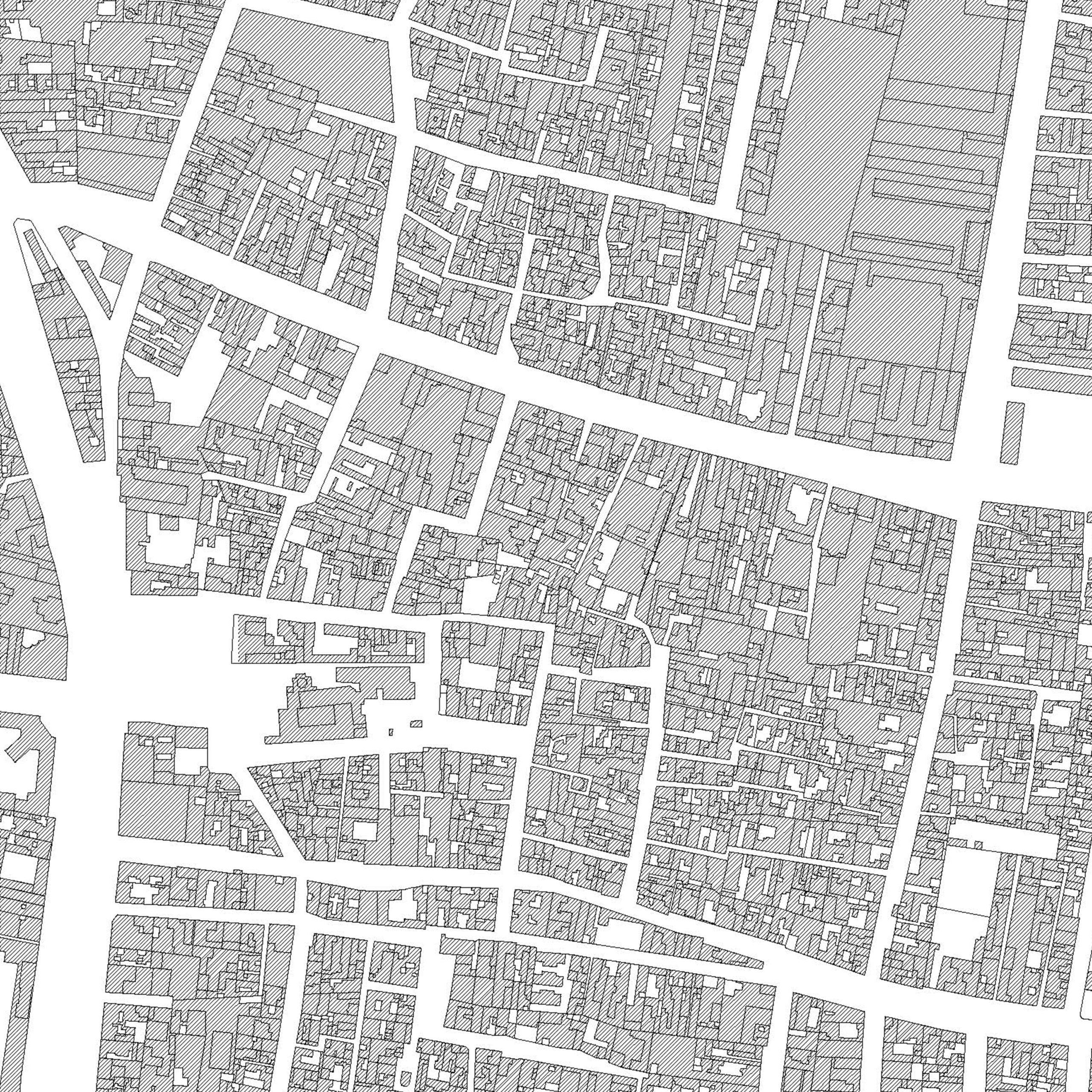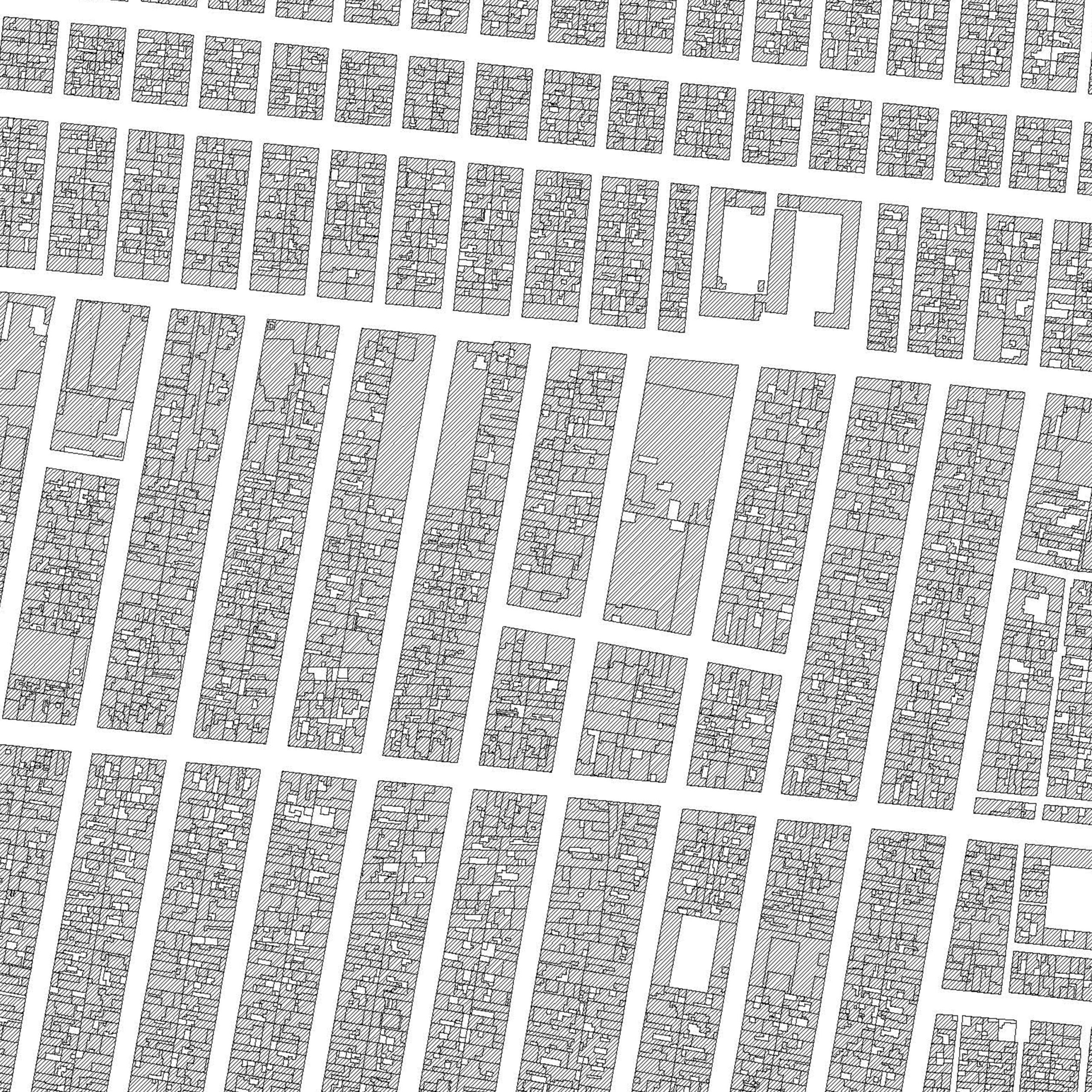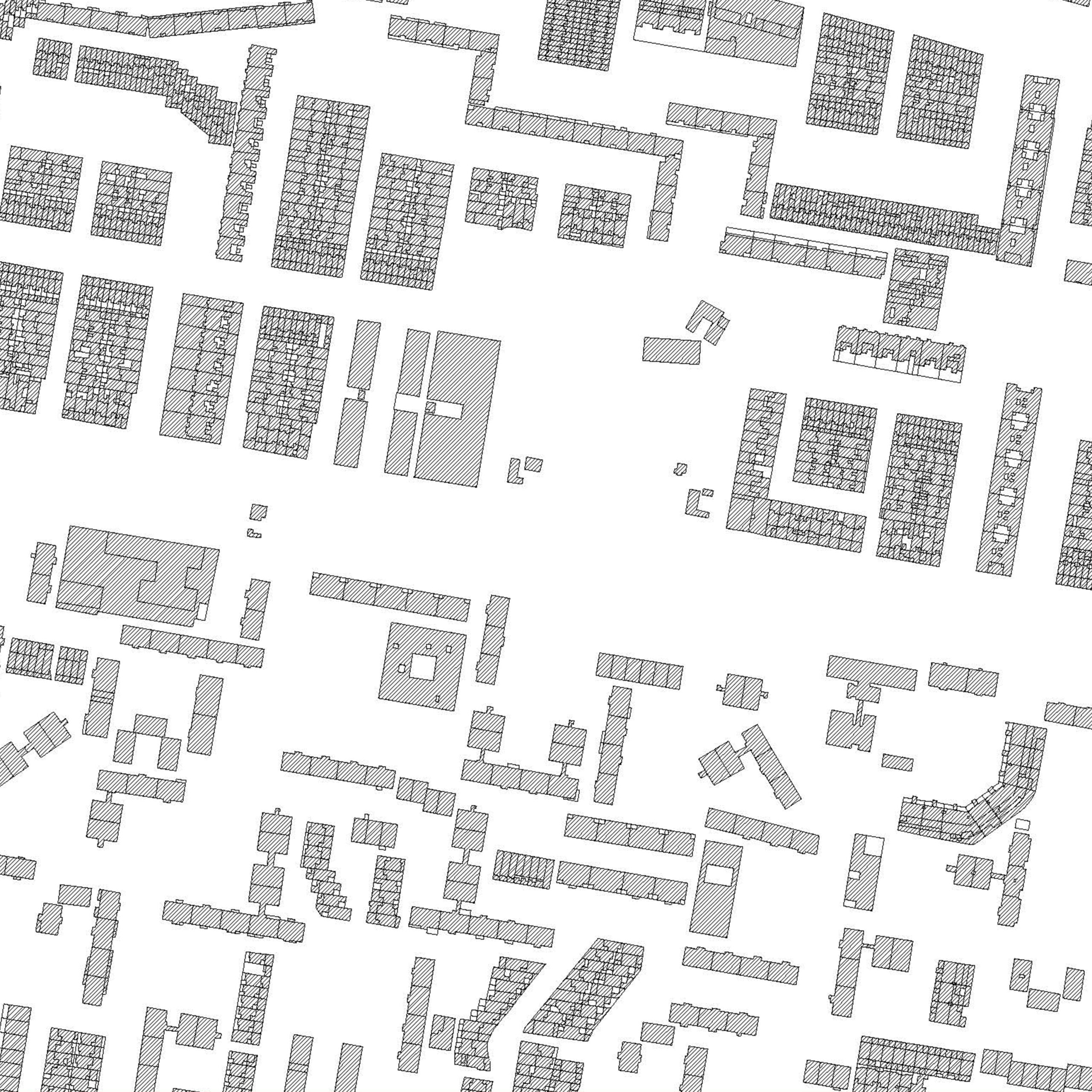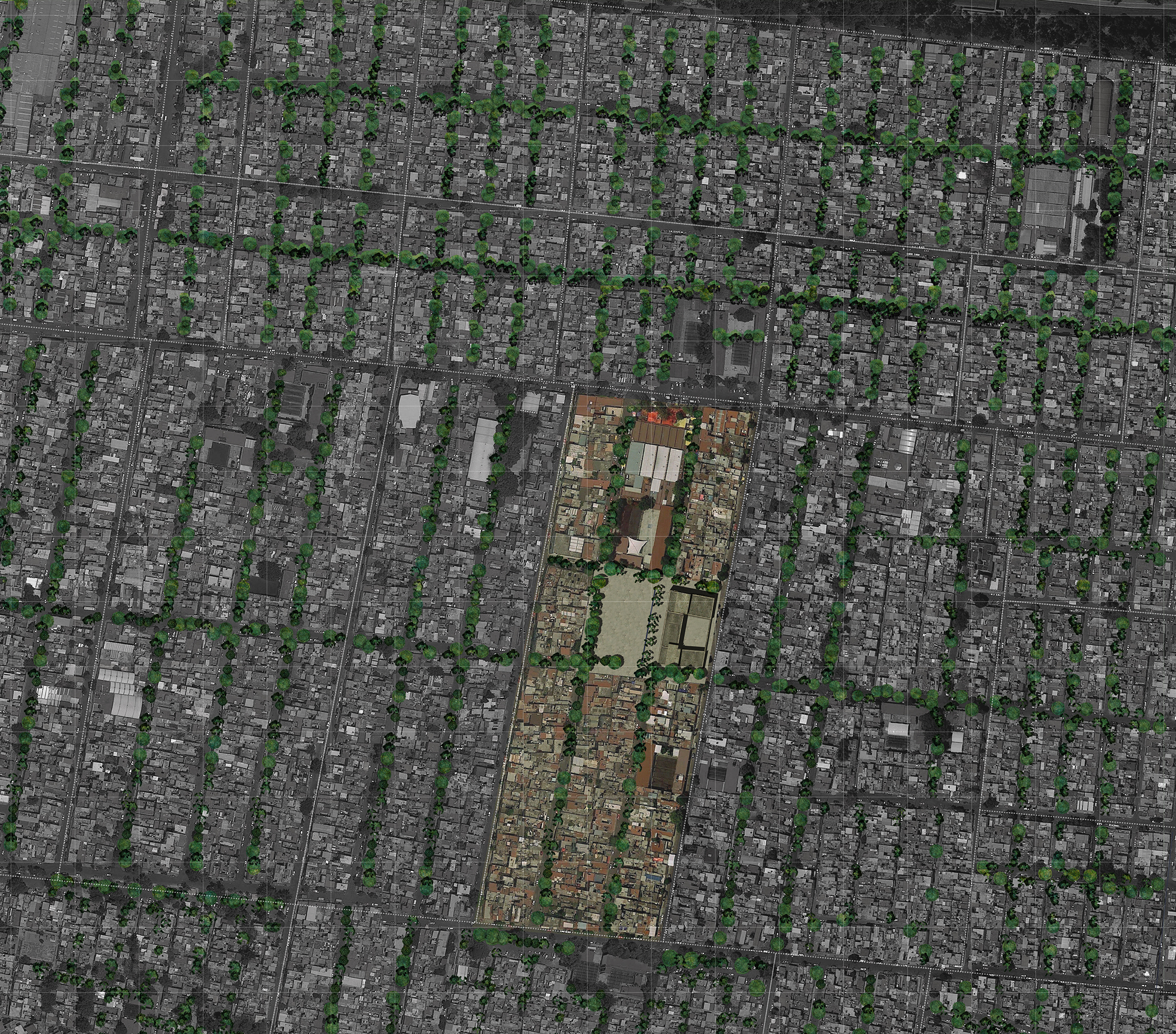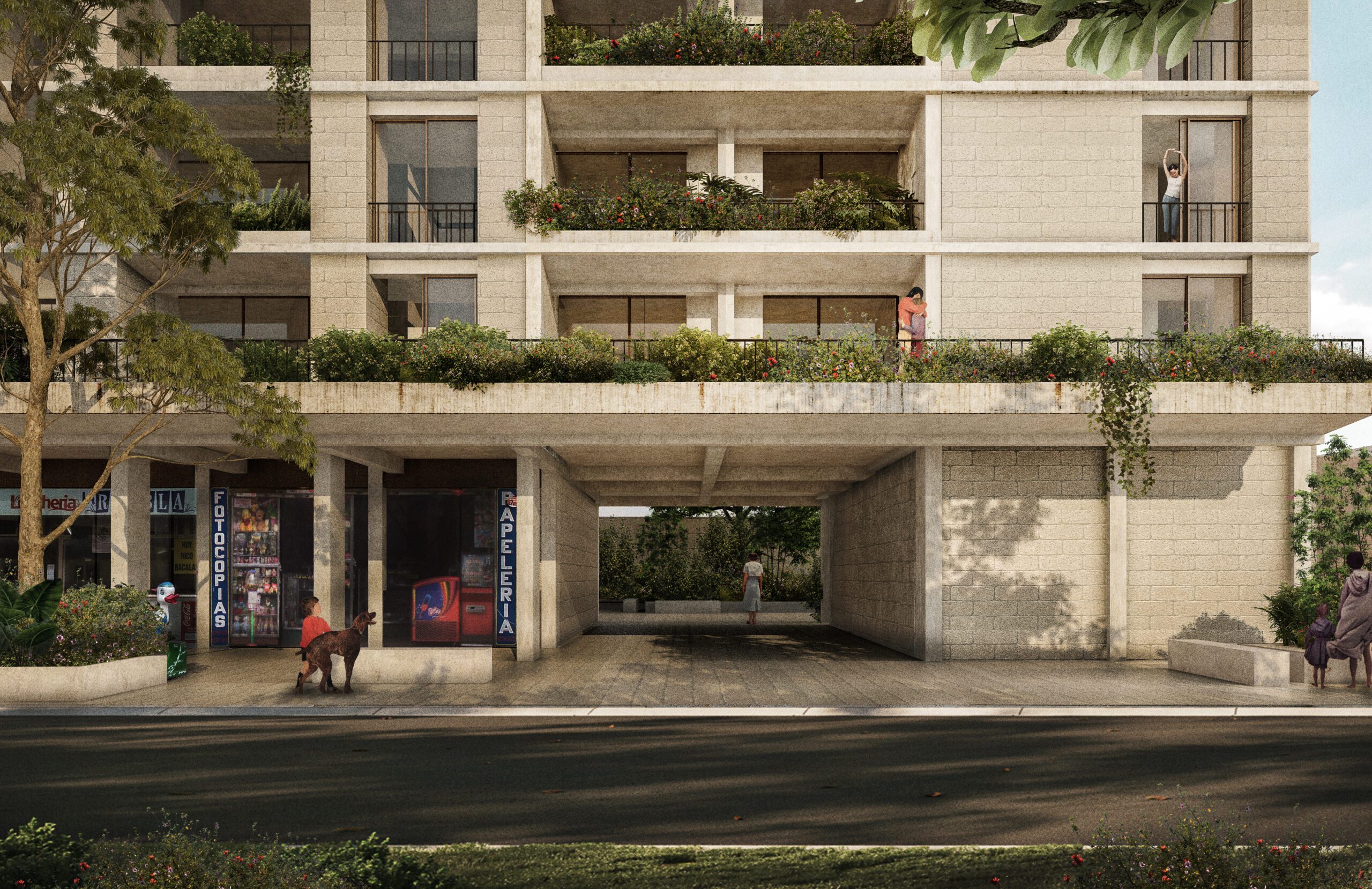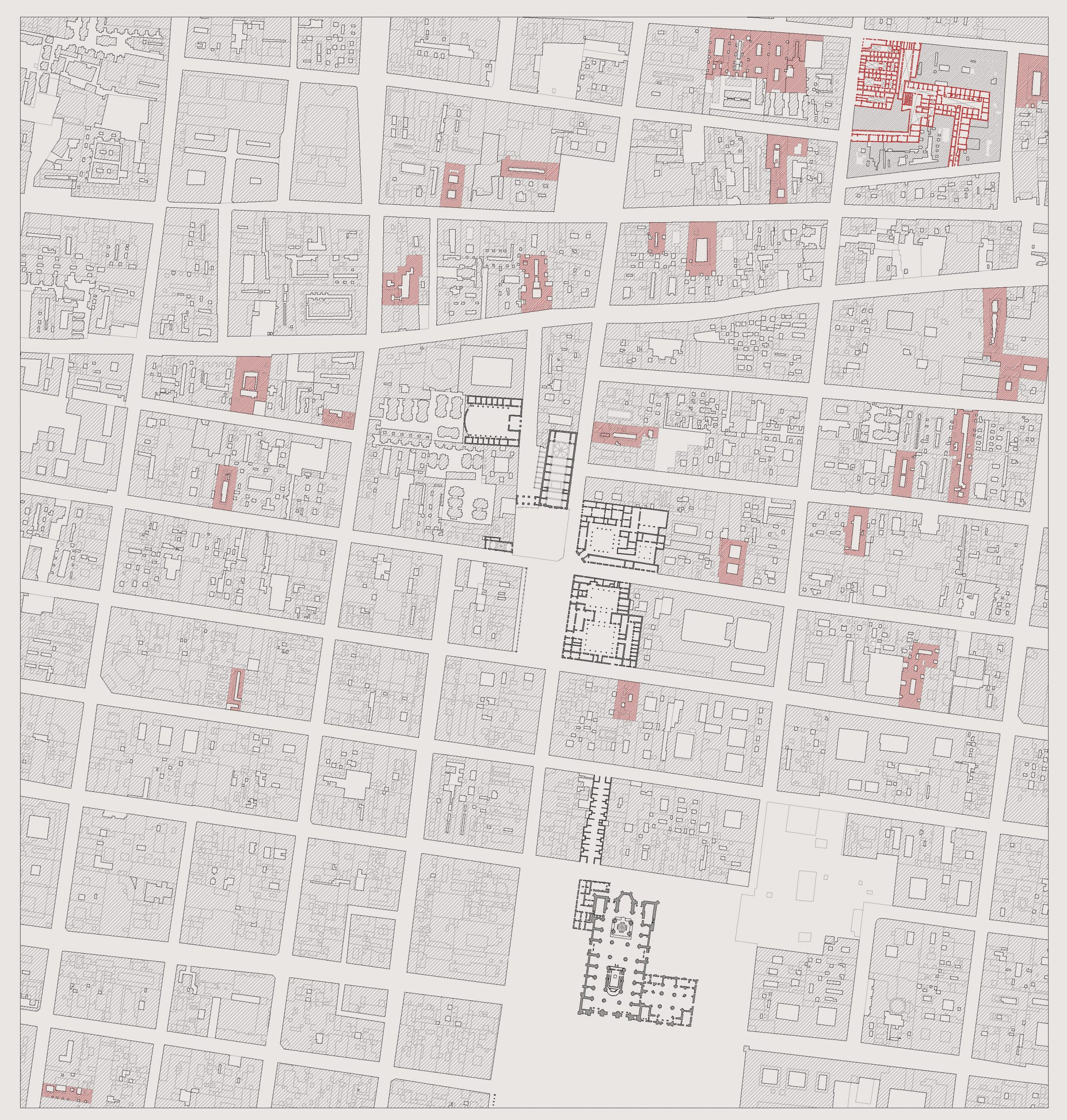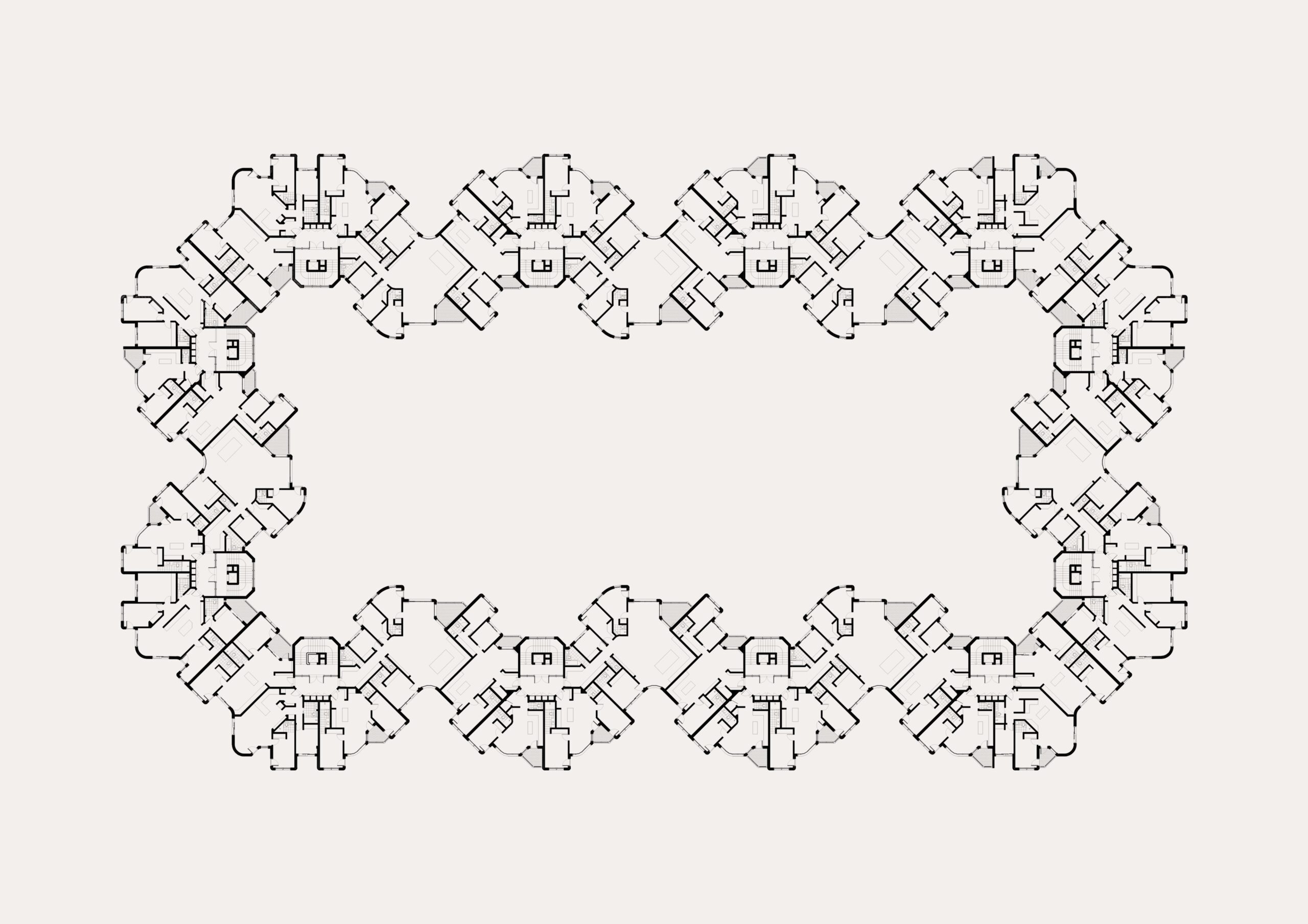Iztacalco Development Plan, Mexico City
2020 – 2021
Location: Iztacalco, Mexico City
Type: Urbanism, housing and civic building
Status: Feasibility Studies
Budget: N/A
The delegación of Iztacalco in Mexico City is located relatively centrally but suffers from a distinct lack of public infrastructure, low levels of economic activity and an elderly population. Built during the rapid expansion of the city during the 20th Century, many owners are the first time occupiers who have long since retired and there is very little housing variety to cater for other generations. This is compounded by the lack of jobs and poor infrastructure, creating a low economically active and uni-dimensional district.
The proposals seek to address these issues with a civic infrastructure; creating links to the existing public transport network, pedestrianising streets and creating small neighbourhoods through ‘super-blocks’ which themselves will become self-sufficient in terms of water, a significant city-wide issue in Mexico City. The creation of pedestrianised streets will help to re-establish an urban hierarchy and to concentrate economic development around the new civic infrastructure of streets, plazas and the neighbourhood houses.
Each ‘super-block’ will be developed with a ‘neighbourhood house’ at it’s heart – based on Las Casas de Vecindad, a form of traditional collective living in Mexico City – re-interpreted to provide a variety of dwelling types, inter-generational living and a high density of inhabitation. The ground floor of the neighbourhood houses will house local amenities and social infrastructure, with apartments above and huertos on the roof. A water purification facility will be integrated to collect and clean the water from the rest of the ‘super-block’ before redistributing it back to the houses, removing the neighbourhood’s reliance on the centralised water system. The Neighbourhood houses will provide a varied and dense form of urban dwelling provision whilst helping to stimulate local economic activity and engender the new public plazas, helping to decentralise this part of the city.
In collaboration with Oficina de Práctica Arquitectónica.
